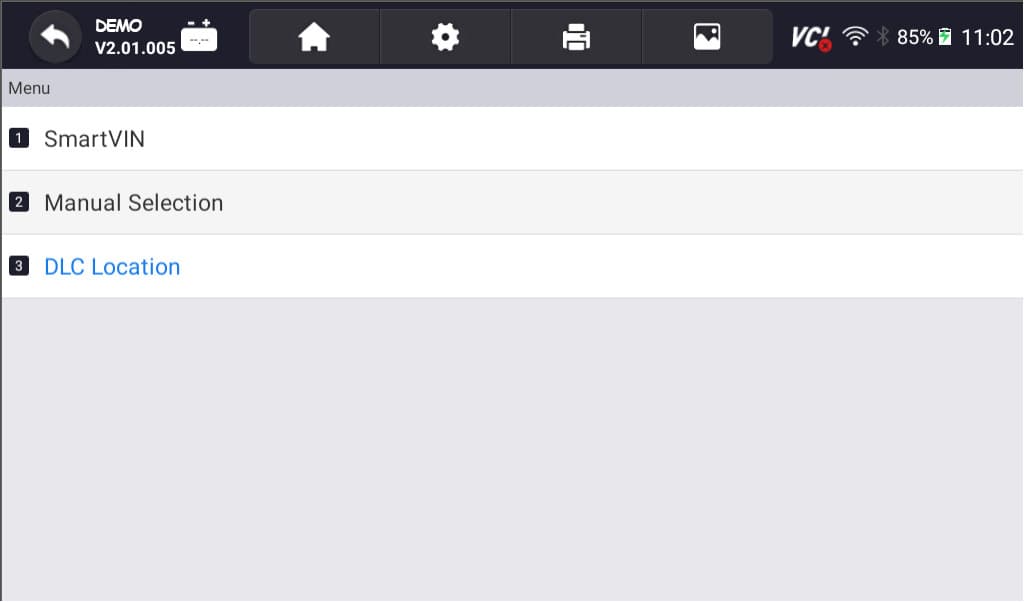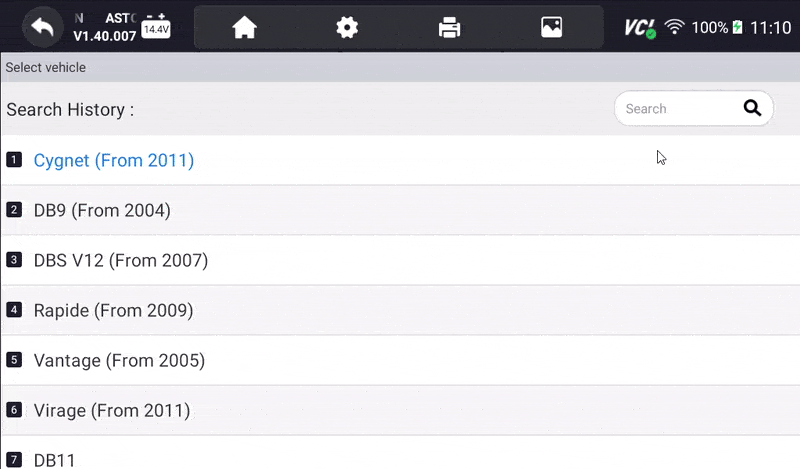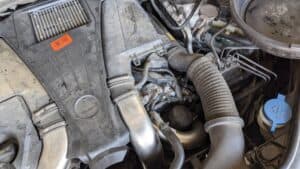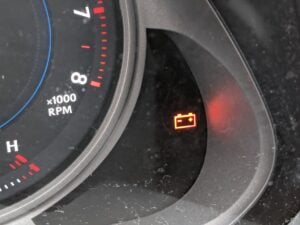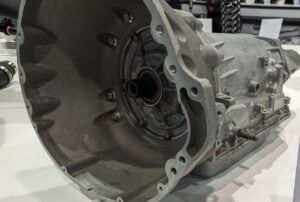Read and Clear Aston Martin Fault Codes: A Simplified Guide
Your Aston Martin, a symbol of elegance and sophistication, might occasionally throw a tantrum, signaling its displeasure with a lit-up “Check Engine” light (CEL), ABS, System Check, or even a warning message such as Emission System Service Required. These lights trigger what are known as Diagnostic Trouble Codes (DTCs), which are the cryptic messages that your Aston Martin’s onboard computer uses to communicate underlying issues.
The issue could range from malfunction for your airbags, cylinder, engine misfire, ignition, braking system, clutch, fuse, transmission, traction control, ABS, and many more. Now you come wondering, what are the cryptic messages your vehicle tells you? This is where an OBD-II scanner comes into place. With a car of elegance and sophistication, it is essential to use a professional-grade scanner like the YOUCANIC scanner, which can read and erase Aston Martin fault codes. Ignoring these codes may lead to more expensive repairs. Though some errors may not necessarily need immediate repair, it is essential not to overlook these kinds of light in your dashboard.
What is an OBD-II scanner?
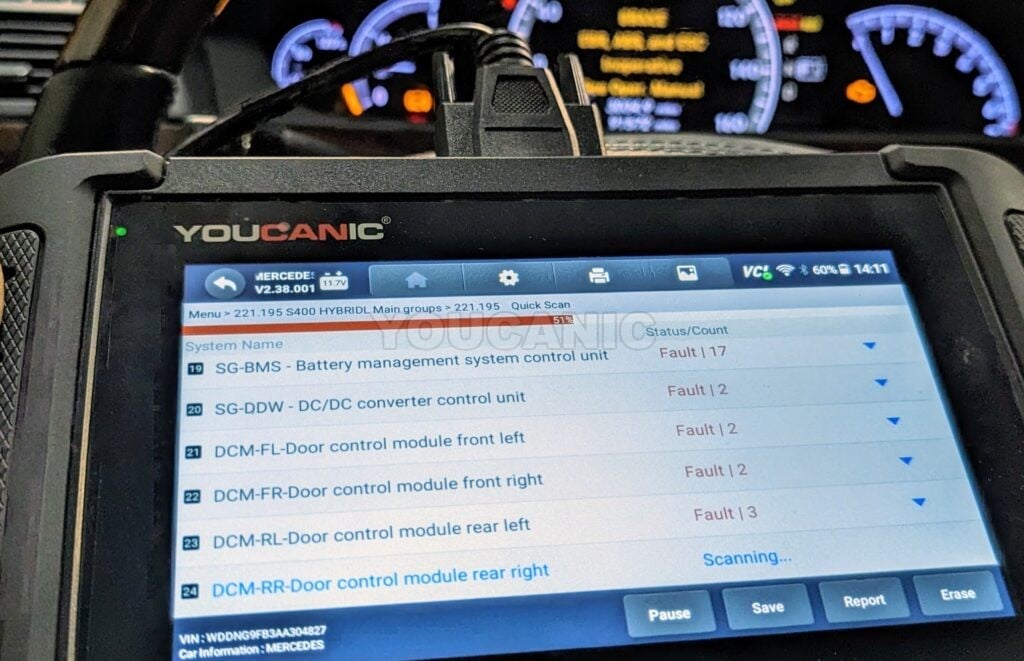
OBD stands for “On-Board Diagnostic”. Most modern vehicles now include an OBD port, which can be utilized by a scanner that communicates to your vehicle. It is plugged in by an OBD-II scanner into the socket, designed to help automotive technicians interpret faults and other issues that your Aston Martin may be experiencing or have recorded. All modern Aston Martin’s have an OBD-II Port, like the DBX, DB11, Vantage, DBS, etc. We’ll delve into the steps on how to read, interpret, erase codes, live data, freeze frame data, and the significance of professional-grade scanners that could save you hundreds and thousands on repair if appropriately diagnosed. Although some Aston Martin models like the Aston Martin DB7 Vantage (2000 – 2003) have 2 OBD-II ports, one for “Powertrain,” and the other one for “Body.”
How to Read Aston Martin Fault Codes
- Gather the necessary tools: Equip yourself with a Professional-Grade OBD-II Scanner compatible with your Aston Martin. See Professional-Grade YOUCANIC Scanner

- Access the OBD-II Port: This port is usually found under the dashboard, near the steering column; the OBD-II port is the gateway to your car’s diagnostic information. Turn the ignition key to the “ON” position without starting the engine to make a connection with the vehicle’s computer. If your ASTON MARTIN has a START/STOP feature, press the button without pushing the brake pedal. Do not start the engine. If you are unsure of the OBD-II port of your vehicle, you can always check the Car Owner’s Manual.

- Access the Diagnostic Menu: On the YOUCANIC scanner’s display, navigate to the “Diagnostic” or “Scan” menu. This menu allows you to access various diagnostic functions for your Aston Martin.

- Select ‘AstonMartin’ as the Vehicle Make: This ensures the scanner effectively communicates with the Aston Martin On-Board Diagnostic system and effectively scans the fault codes.

- Select option for model selection: The scanner has various options; you can choose SmartVIN to detect your vehicle automatically. However, you select Selection Manual if SmartVIN does not work as intended.

- Select the Specific Model and Chassis: After selecting the vehicle make, scroll through the available models and select the correct one for your Aston Martin. Choose the corresponding chassis or body type to properly sync the scanner to your vehicle.

- Select Control Units: Once you have selected the model and chassis, the scanner will let you choose between “Quick scan” or “Control Modules.” Control Modules display a list of control units or modules in your vehicle. Examples include the engine control module (ECM), transmission control module (TCM), and ABS control module. Choose the specific module you want to diagnose. Otherwise, you can also choose the “Quick Scan” to check everything.

- Interpret the Codes: Once the YOUCANIC scanner completes the code retrieval process, the displayed codes will provide information about specific issues detected by the control unit. Note these codes for further analysis and diagnosis. Each DTC consists of a letter and four numbers. The letter indicates the system affected, while the numbers describe the issue more specifically. Click here to learn more about fault codes.

- Erase Codes: After the problem has been repaired, return to the scanner’s menu and select the option to “Erase Codes” or “Clear Codes.” This action removes the stored fault codes from the control unit’s memory, indicating that the problem has been resolved. Please note that you may or may not erase a code when the issue is not fixed.

NOTE: These pictures are just the demo of our YOUCANIC Scanner, it may or may not be exactly the same but the procedure is the same.
Clearing the codes, but it comes back?
Once you’ve identified the DTCs, you may be tempted to clear them, hoping to continue driving your Aston Martin, and the problem magically disappears. Clearing the codes can temporarily remove the “Check Engine” light, butit doesn’t address the underlying issue. It will always come back. Here are also some lists of why you cannot clear the codes of your Aston Martin:
- Use a Professional-Grade Scanner: Ditch the generic scanner and upgrade to a professional-grade one like YOUCANIC. Generic scanners are like trying to open a Ferrari with a Ford key – it won’t work! YOUCANIC, on the other hand, is like the master key to your Aston Martin’s diagnostics, unlocking hidden diagnostic powers and letting you clear codes that would otherwise remain stubborn and hidden.
- Underlying Issues: Before you clear fault codes, remember to address the underlying issue that triggered them in the first place. Clearing codes is like patching a leaky pipe without fixing the cracked valve—it’s just a temporary fix. The ‘check engine’ light will surely come back and haunt you.
- Continuous Fault Monitoring: Like the SRS system’s guardian angels, certain fault codes may be cleared by disconnecting the battery (like a reset). However, they will reappear even after clearing until the root cause is resolved. This is a persistent reminder to fix the problem, not just mask it.
The Unseen Culprits: History, Current, and Stored DTCs
- History: These codes indicate past issues that have resolved themselves or are no longer causing the “Check Engine” light to illuminate. They typically do not require immediate attention.
- Current Codes: These codes represent current or active problems that require immediate diagnosis. They indicate a present issue or malfunction in a specific system or component of the vehicle that needs to be addressed. They will remain displayed until the underlying issue is resolved.
- Stored Codes: These codes are inactive but remain stored in the computer’s memory, recording previous issues. These can provide additional information about past issues as a historical reference for previous faults. While they may not be active, they can offer insights into the vehicle’s history and aid in the diagnostic process.
What are Live Data and Freeze data? Why do they matter?
Live data allows you to monitor real-time sensor readings, providing valuable insights into the car’s operation. On the other hand, Freeze frame data captures a snapshot of vehicle conditions when a fault code is triggered. Analyzing this data provides context and aids in pinpointing the root cause of the issue.
Frequently Asked Questions:
Can I clear DTCs myself?
Yes! While clearing DTCs can temporarily turn off the “Check Engine” light, it doesn’t address the underlying issue. It’s recommended to have a qualified mechanic diagnose and repair the problem first before you clear all the codes. You can also ask for professional assistance.
How iften should I check for DTCs?
Regularly checking for DTCs can help you identify potential issues early on, preventing more serious problems. You can also use it whenever a check engine light illuminates to diagnose or check why your car is acting up.
What are the benefits of using a professional-grade scanner?
Professional-grade scanners provide more detailed information, manufacturer-specific codes, guided diagnostics, and component testing capabilities, making them a valuable tool for accurate diagnosis and repair.
Remember, your Aston Martin deserves the best care, and understanding DTCs is a crucial step in maintaining its peak performance and ensuring your driving pleasure remains uninterrupted.
References
- What Is an OBD2 Scanner and How Does It Work?
What Is an OBD2 Scanner and How Does It Work? | The Drive - What does the check engine light of your Aston Martin mean?
What does the check engine light of your Aston Martin mean? (startmycar.com)






